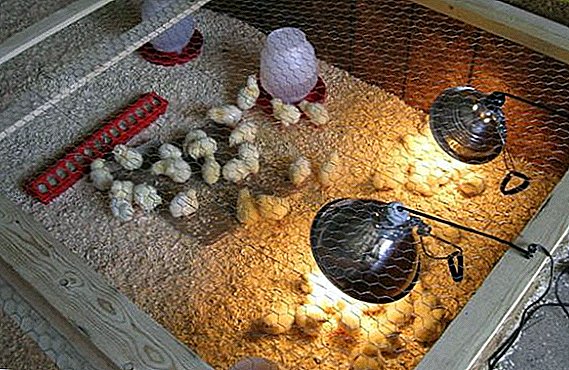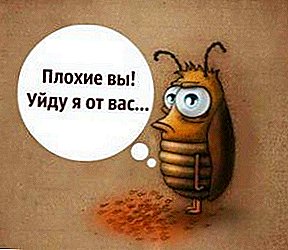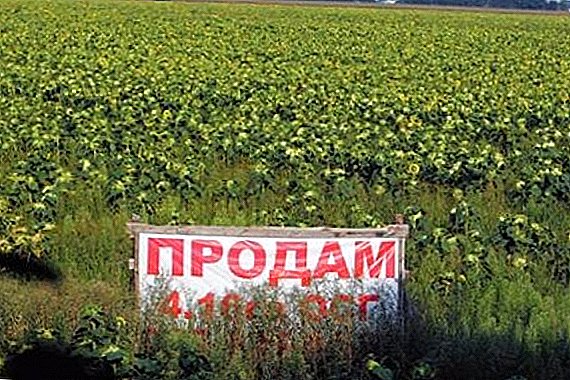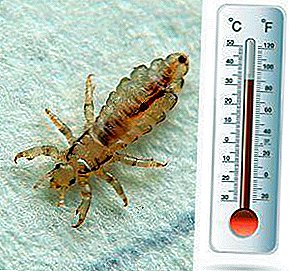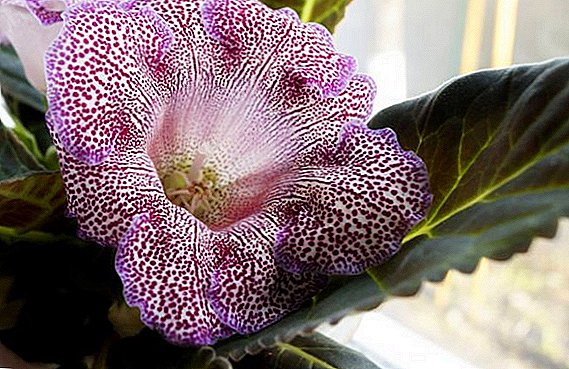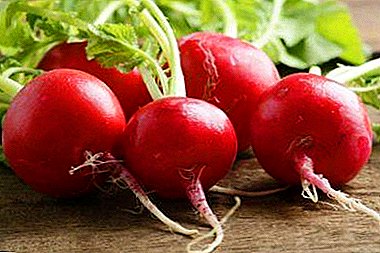 There are different types of weeds. Most of them compete with cultivated plants, winning over their living space. Feeding themselves (in scientific language, being autotrophs), they, like lovingly planted vegetables or flowers, need light, moisture, mineral substances, therefore they try to fight for life, oppressing their neighbors.
There are different types of weeds. Most of them compete with cultivated plants, winning over their living space. Feeding themselves (in scientific language, being autotrophs), they, like lovingly planted vegetables or flowers, need light, moisture, mineral substances, therefore they try to fight for life, oppressing their neighbors.
Some weeds do this with the help of a more developed root system, others at the expense of capturing new territories, for example, by abundant self-scattering.
But there are also more insidious weeds that do not conquer territory from other plants, but simply live at their expense, being, therefore, not competitors to them, but "dependents." With one of these parasites and we have to get to know better. So, dodder: what it is and how to deal with it.
Dodder: Meet the Malicious Weed
Dodder - it is a poisonous plant without leaves and roots that cannot exist otherwise than at the expense of other members of the plant world: using peculiar suckers attaching to the donor and deeply penetrating into its tissue, the dodder parasitizes on such plants, spreading rapidly to new and new territories .
Did you know? Special organs that help the dodder to gain a foothold on the plant are called haustoria. The word haustor is of Latin origin and is literally translated as drinker, drawing. Haustoria for its intended purpose replaces the dodder roots. In fact, these are the modified roots, they only draw vitality not from the soil, like other plants, but directly from the body of the “owner” (more precisely, the victim). In contact with another plant, haustoria begin to develop rapidly, like roots falling into fertile soil, penetrating into the organs of the donor and sucking out vital juices necessary for the parasite.This ability to exist dodder makes it one of the most dangerous and viable parasites, moreover, it tends to develop very quickly and adapt to new climatic conditions.
The tropical forests of Africa and America are considered the birthplace of the weed, from where it has spread its tentacles almost all over the world, changing in accordance with the peculiarities of the new territories.  As a result, more than 2.5 hundreds of various types of this parasite are known today, differing from each other in color, thickness and structure of stems and flowers, as well as taste preferences - a type of culture, due to which the parasite mainly feeds on (however, most types of dodder are characterized "omnivorous"). Only 164 countries suffer from the invasion of the field today!
As a result, more than 2.5 hundreds of various types of this parasite are known today, differing from each other in color, thickness and structure of stems and flowers, as well as taste preferences - a type of culture, due to which the parasite mainly feeds on (however, most types of dodder are characterized "omnivorous"). Only 164 countries suffer from the invasion of the field today!
Outwardly, dodder looks like a long braid, which can be both smooth and bumpy. Since this plant does not need photosynthesis, there are no green parts in it: thanks to the dye substitute flobaphene, it has a yellow or reddish color. The almost imperceptible scales covering the long stalk of the dodder is a reminder that the plant once had leaves, but lost them in the process of evolution as superfluous.
Very small white, pink or light green flowers cover the whole plant. The seeds are very numerous and tenacious: one vine produces more than one hundred thousand seeds, each of which can sprout, having lain in the ground for more than five years and even passing through the animal's digestive tract and hitting the ground with manure.
Did you know? Another unpleasant dodder ability is to "mask" the seeds, making them as similar in appearance as possible to the seeds of the victim plant. Thus, collecting for planting the seeds of your favorite flowers infected with this parasite, you risk planting yourself in the spring along with the flowers and the vampire that kills them.
 The seeds of dodder, hatching, the first 2-3 weeks are able to feed themselves. Moreover, the nutrients inside the seed can move from one tip to another, due to which the seed itself moves in space for short distances (up to 30 cm).
The seeds of dodder, hatching, the first 2-3 weeks are able to feed themselves. Moreover, the nutrients inside the seed can move from one tip to another, due to which the seed itself moves in space for short distances (up to 30 cm).Grassy plants as well as shrubs and trees can become victims of the dodder. Most often, weed dodder parasites in the meadows (clover, alfalfa and other wild fodder grasses are especially susceptible to its harmful effects), but it may well become an unwanted guest in the garden or in the garden. Frequent cases of lesion dodder legumes, vegetables, melons, vineyards and berries, fruit trees and shrubs, as well as flowers.
The vital activity of the dodder brings great harm to its victim. Feeding the parasite, the culture slows its growth, loses the ability to develop normally due to the imbalance of mineral compounds and organic substances. In perennial crops, as a result, winter resistance is sharply reduced, and there is no reason to speak about the negative impact of the parasite on the quantity and quality of crops. 
Dodder is dangerous not only for the plant, but also for the animal world. Poisonous alkaloids that are part of the dodder can cause severe poisoning, and sometimes the death of animals, especially if the plants infected with the parasite were used in food not fresh, but in the form of hay. In addition, dodder is a carrier of many viral diseases. Fodder grasses not cleared from it are covered with mold and poorly dried.
In small doses, dodder can have a beneficial effect on the human body, and in many respects this is facilitated by precisely those substances that are poisonous in overdose. On the basis of dodder produce various drugs that are widely used in traditional medicine (the official pharmaceutics does not use this plant because of insufficient knowledge). As a medicinal raw dodder should be collected when the plant blooms.
In some online stores, there were even offers to buy dodder seeds, and the price is impressive: 50 g of seeds cost about $ 8 equivalent, while a similar bag of seeds, say, parsley, is much cheaper! 
It is possible that dodder trade is a profitable business, but it is hardly worth planting such a plant on its own plot: such a parasite will do much more harm than good. In order to plant a dodder, then not to break my head, how to get rid of it, it is better to obtain medicinal raw materials in a more rational way.
And it’s easy to guess how difficult it is to fight dodder when you consider how deeply a plant penetrates into the “body” of its victim: when such a connection has occurred, the parasite can be killed only simultaneously with the donor. In addition, given the longevity of the seeds, even a long quarantine organized on the site may be ineffective.
Important! As is often the case, what makes the dodder strong and indestructible is at the same time its weakness: until the plant has found a donor and is not securely attached to it, it is quite vulnerable to external influence and can be easily destroyed both mechanically and chemically. .And yet the best way to combat dodder - prevention.
Preventive measures: how to prevent the dodder invasion
Since the dodder has an amazing vitality, the main rule for a gardener is to make sure by any means that the seeds of the plants you plant, the organic fertilizers you use, the inventory you work for do not contain the seeds of this parasite. 
If the dodder has been spotted on your site, avoid planting seeds collected nearby for the next year (of course, we are not talking about large seeds that are deep inside the fruit and are extracted after it has lain for several days on your window sill).
Buy the seeds of your favorite flowers in the store - it will be much cheaper: since the standards in force in our country prohibit the use of seeds clogged with dodder, a conscientious manufacturer conducts a special phytopathological examination of the seed before selling, so it is almost impossible to buy a dodder along with the main crop.
Do not ask manure from a familiar grandmother, because you do not know what her animals ate. Get fertilizer in the checked places and ask from the manufacturer or from the seller whether they guarantee the purity of their products. It is believed that completely rotted manure is a sufficient guarantee that dodder seeds, if they fell into it, have lost their germination.
 The same caution must be exercised in relation to the soil that is used for seedlings. Never take the land in a meadow where there is a lot of weed, and best of all buy ready-made extract in the store: this soil is not very expensive, but it is guaranteed not infected with pests and in addition is saturated with all the organic and inorganic substances necessary for seedlings. It is not uncommon for dodder seeds to be brought into the ground with water used for watering, but here it is much more difficult to protect oneself.
The same caution must be exercised in relation to the soil that is used for seedlings. Never take the land in a meadow where there is a lot of weed, and best of all buy ready-made extract in the store: this soil is not very expensive, but it is guaranteed not infected with pests and in addition is saturated with all the organic and inorganic substances necessary for seedlings. It is not uncommon for dodder seeds to be brought into the ground with water used for watering, but here it is much more difficult to protect oneself.
So, be extremely careful and remember: dodder, as a rule, rages on not plowed meadows, and our own negligence helps the parasite to penetrate the dacha!
Agrotechnical techniques to combat dodder
If the dodder still appeared in your garden, there are some ways how to remove a weed without resorting to the use of poisons or long-term quarantine.
So, we already know that the main potential danger of the dodder is its numerous seeds, which are capable of maintaining their vitality for a long time, even being rather deep in the soil. Therefore, the main and first task is to prevent the parasite's seeds from ripening.
Mechanical removal of the dodder from the plant to which it has adhered is an ineffective way to control the weed: it is enough not to notice a small fragment of the stem and the parasite will recover. Therefore, the diseased plant must be removed from the ground and mercilessly burned, and the sooner the better! 
It is possible to try to remove the dodder from a plant only in the case when the parasite has not yet enveloped its victim, and the phenomenon has a clearly isolated character. However, in this case it is necessary to carry out several check-ups, since the torn stalks easily stick to the donor plant again.
You can try to clean the soil contaminated with dodder seeds. There are several ways to do this.
The first is to bury the seeds to a depth from which they cannot ascend. The peculiarity of the dodder lies in the fact that, as mentioned, it does not have its own developed root system, therefore its seeds can germinate exclusively in the surface layer of the soil. Therefore, an effective method of dealing with dodder is deep (preferably not less than two bayonet shovels) digging the soil with the necessary turning of the ground - this allows you to "bury" the seeds accumulated on the surface as deep as possible.
The second method aims to artificially stimulate the seeds of dodder to germinate as quickly as possible, in order to then destroy their shoots, not allowing them to cling to the plant-victim (as was said, the dodder is almost defenseless without a power source). Stimulate the germination of seeds remaining on the surface can be abundant irrigation in the fall and spring for a couple of weeks before planting the main crop in the ground. 
Sprouted seeds will quickly give rise to shoots that can be easily removed by surface treatment. However, if young shoots of vines in a week and a half do not find a plant to which they could cling, they themselves will die because of the inability to grow independently.
An additional precautionary measure after cleaning the soil is planting on it those crops on which the plant does not parasitize. For example, oats and wheat are fairly resistant to this parasite.
Meadows infected with dodder, recommend mowing before the plant blooms. If we are talking about a vegetable garden, cut off at a height of 2-3 cm above the ground, it is necessary both the affected grass (for example, in the aisle) and its neighbors within a radius of at least 1 m. Then it is recommended to seed this area with the same oats or other cereals to avoid re-infection.
Another method to fight dodder - fire. To this end, in the second half of the last century, the Americans used special gas flame throwers (flame weeder), with which they cultivated vineyards and mowed meadows. This technique is used in some European countries. There is no such equipment in our country, and it is not safe to use open fire at the dacha. 
Finally, another non-chemical way to combat dodder is the use of preparations made on the basis of the races of the fungus Alternaria, however, again, in our country such biologics are problematic, and, moreover, they only work in a humid environment, that is, on the stem dodder should be water for a long time. As soon as the plant dries, it ceases to be exposed to the fungus.
The use of herbicides to destroy dodder
Our recent ancestors, in despair of the lime dodder, tried to use iron and copper sulphate and even kerosene and sulfuric acid against it. The first two drugs did not show high efficacy, as for the third and fourth, then using such substances in the country house, perhaps, is the same as treating a headache with a guillotine.
Therefore, in particularly difficult cases, when neither the fire, nor the "sword", nor the "similar to the like" failed to defeat the parasite, there is only one way out - herbicides. It cannot be said that their choice is too great, but with a certain perseverance it is possible with their help to overcome the dodder on vegetables, fruit trees and vineyards.
If it is necessary to get rid of dodder seeds on a bed freed from the main culture, ethylhexyl salts and esters can be used. Mixed with ammonium nitrate and ammonium sulfate, these drugs will save you from the weed. But if in the affected area there are other plants, especially dicotyledons, they will suffer just as radically as the pest itself. 
Glyphosates are safer for such crops, but they cannot be used after the plant has sprouted. Therefore, the drug should be used after provocative irrigation, as soon as the dodder germinates, but before the main crop is planted. The second option - processing in the fall, after harvesting the crop and again after active watering.
Important! Herbicides kill the young dodder much faster. When the parasite begins to bloom, its resistance to chemicals becomes much higher. Therefore, in the fight against dodder, time is working against you! Another secret: herbicides work best on a wet plant, so it is advisable to carry out the treatment after rain or abundant watering.Get rid of dodder, hit the vegetables, much harder than the lime of this parasite on meadow grasses.
Potatoes, tomatoes, peppers, tomatoes and other solanaceous dodder are destroyed by soil herbicides such as "Reitar", "Gezagard", "Zenkor Liquid", etc. (the last preparation produced by the German company "Bayer" destroys the dodder at the very beginning of its growth) .
But C-metallohlorovye drugs such as "Typhoon" or "Dual Gold" can kill dodder only in a concentration that is dangerous for the vegetable itself.
Carrots can be saved from dodder with a mixture of herbicides "Stomp" and "Reiter".
Among other herbicides recommended for fighting dodder, it is also possible to single out Titus (produced by the Swiss company DuPont) and Targa (the Japanese drug from Nissan Chemical).
Dodder - a very dangerous weed. Herbicides help to get rid of it, however, a positive effect can be achieved only when they are combined, both among themselves and with other agrotechnical methods (soil digging, quarantine, planting of unaffected crops, etc.). Only such persistent and systematic work can give one hundred percent result.



